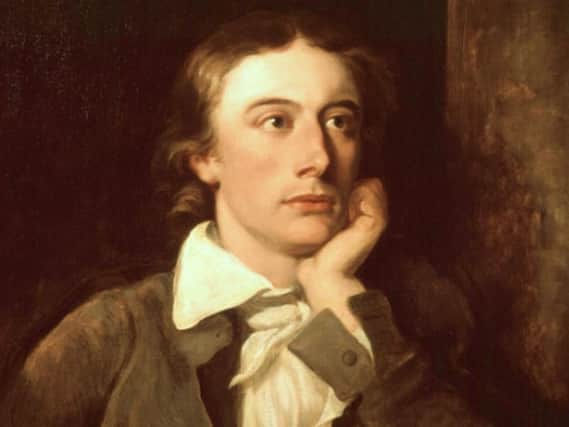Remembering John Keats


On Saturday 23 January 1819, the poet, John Keats arrived with his friend Charles Armitage Brown at The Mill House in Bedhampton to stay with the miller, John Snook, and his wife Letitia. Keats spent two weeks in the village where he wrote The Eve of St Agnes; one of his most important poems.
The following year, on Thursday 28 September, 1820 a storm forced the ship that John Keats was travelling on, to dock in Portsmouth, effect repairs and take on supplies. John Keats took this opportunity to return to The Mill at Bedhampton.
Advertisement
Hide AdAdvertisement
Hide Ad"By this time he was dying of tuberculosis and was en route to Italy, in the belief that the warmer climate would improve his condition. His stay at The Mill House was to be his last night on English soil and he died in Rome from the condition just five months later.
Nigel Gossop, a member of the Bedhampton Historical Collection group, based at The Elms in Lower Road has written a monograph booklet to mark the occasion. Entitled John Keats in Bedhampton. The booklet will be launched on the significant St Agnes Eve date of Sunday 20 January with an illustrated talk at The Elms starting at 2pm. Tickets for the book launch are £4.00. To book, please contact Nigel or Wendy on 023 9237 5594. Copies of the booklet are £5.00 each, available from Sunday 20 January.
On the Eve of St Agnes there will be a special candlelit recitation of The Eve of St Agnes right in the heart of the village where the poem was written 200 years ago.
The recitation by the actor, Tom Durham begins at 7pm in St Thomas’s Church . Tom has become a voice in literary features and programmes for BBC Radio Arts with appearances in Kaleidoscope, Nightwaves and Front Row. In 1995 Tom recited The Eve of St Agnes at Keats House for the Bi-centenary of Keats birth year
Advertisement
Hide AdAdvertisement
Hide Adcelebrations. There will be a £3.00 admission charge that includes interval refreshments.
Over the weekend of Saturday 26 and Sunday 27 January Visitors can collect a copy of The Time Travellers Guide to Bedhampton Village – and take a self-guided walk, following in the footsteps of John Keats and others who have built and shaped the village throughout its fascinating history. Discover where the biscuit factory was, the Poorhouse and the freshwater springs that made Bedhampton famous. There will also be a small display inside St Thomas’s Church outlining details of Keats visit to Bedhampton.
The Secret Bookshop and The Waterloo Room at The Elms will be open on both Saturday and Sunday for refreshments between 10am and 3pm where visitors will
also be able to view a large (3 metre) 1825 map of the Parish of Bedhampton.
Advertisement
Hide AdAdvertisement
Hide AdThere is free parking is available at Bidbury Mead Recreation Ground The celebrations will close with ‘Romance is my Religion’: a special Evensong
service held in St Thomas’s Church at 3.30pm on Sunday 27 January.
Nigel said: "John Keats was the last of the Romantic poets to be born and sadly, the first to die. He was a key figure in the second generation of the Romantic poets along with his
contemporaries, Lord Byron and Percy Shelley. In his short life; his work having been in publication for only four years before his death, he was attacked by the critics and branded in derogatory terms as a ‘cockney poet’. Yet his genius and the value of his writing were not recognised during his lifetime or in the years immediately after his death in 1821 at the age of just 25."
Advertisement
Hide AdAdvertisement
Hide AdAdvertisement
Hide AdAdvertisement
Hide AdChichester exhibition explores the restorative power of art in dark timesLittlehampton Musical Comedy Society promise panto fun!
Advertisement
Hide AdAdvertisement
Hide Ad